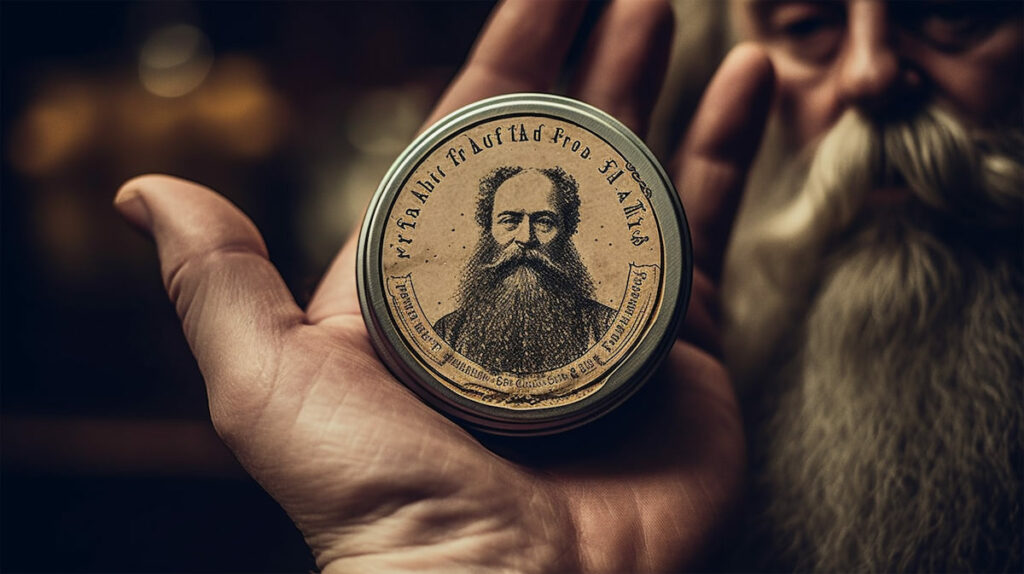
Facial hair has been a symbol of masculinity since the beginning of time. While some men naturally grow a full, luscious beard, others struggle with patchy or slow facial hair growth. In recent years, there has been a significant rise in the popularity of beard balms, with some claiming that they can help with facial hair growth.
But is there any truth to this claim? In this article, we will explore the science behind facial hair growth and the role beard balms play in supporting optimal growth.
Understanding Beard Balm
Before we dive into how beard balms can help with facial hair growth, let’s first understand what beard balm is. Simply put, a beard balm is a grooming product made from natural ingredients like beeswax, shea butter, and essential oils. Typically, beard balms are designed to moisturize and condition facial hair while providing hold and control.
Beard balms are an essential part of any bearded man’s grooming routine. They are formulated to provide the necessary nutrients and moisture to keep your facial hair looking and feeling its best. Not only do they help with styling and control, but they also promote healthy growth and prevent dryness and itchiness.
What is Beard Balm?
Beard balms contain various natural ingredients like beeswax, shea butter, and essential oils. These ingredients work together to provide conditioning and moisturizing properties. They also help to provide hold and control, which makes it easier to style your facial hair. Beard balms come in different formulations, including those made specifically for beard growth.
Beard balms are versatile products that can be used for a variety of purposes. They can be used to soften and condition your beard, to add shine and luster, or to provide hold and control for styling. Some beard balms even have a subtle scent that can help to freshen up your beard and leave you smelling great all day long.
Key Ingredients in Beard Balm
Beard balms typically include natural ingredients like shea butter, cocoa butter, beeswax, and essential oils. Shea butter is rich in vitamins and antioxidants that nourish your facial hair. Beeswax helps to lock in moisture and provides hold for a better hair texture. Essential oils like lavender and peppermint can help promote relaxation and calmness.
Other key ingredients in beard balms include jojoba oil, argan oil, and coconut oil. These oils are known for their moisturizing and conditioning properties, and they can help to prevent dryness and itchiness in your beard. They also help to promote healthy growth and make your beard look and feel fuller and thicker.
How to Use Beard Balm
Using beard balm is easy. First, take a small amount of balm and spread it on your palms. Rub your palms together and then apply it to your beard, working it through until it’s evenly distributed. Comb or brush your beard according to your desired style. Repeat the process as needed, depending on how much growth and control you want in your beard.
When using beard balm, it’s important to start with a small amount and work your way up. Too much balm can make your beard look greasy and weighed down. Experiment with different amounts to find the right balance for your beard.
Overall, beard balm is an essential grooming product for any man with facial hair. It provides the necessary nutrients and moisture to keep your beard looking and feeling its best, while also helping with styling and control. With regular use, beard balm can help to promote healthy growth and prevent dryness and itchiness. So if you’re looking to take your beard game to the next level, give beard balm a try!
The Science Behind Facial Hair Growth
Facial hair growth is a natural biological process that is influenced by several factors. To understand how beard balm can help with facial hair growth, we first need to understand the science behind hair growth.
The Role of Genetics
The primary determinant of facial hair growth is genetics. Depending on your genetic makeup, you may have thicker or thinner hair, or your hair may grow faster or slower. However, genetics is not the only factor that affects facial hair growth.
Research has shown that environmental factors can also play a role in facial hair growth. For example, exposure to certain chemicals or pollutants can damage hair follicles and inhibit hair growth. Additionally, poor nutrition and stress can also impact hair growth.
Hormones and Hair Growth
The hormone testosterone plays a crucial role in hair growth, especially in men. Testosterone promotes hair follicle growth and stimulates the production of keratin, the protein that forms your hair shafts. High levels of testosterone can result in faster and thicker hair growth.
However, testosterone is not the only hormone that affects hair growth. Dihydrotestosterone (DHT), a derivative of testosterone, is also important for facial hair growth. DHT is responsible for the growth of terminal hair, which is the thick, dark hair that grows on your face and body.
The Hair Growth Cycle
The hair growth cycle has three stages: anagen, catagen, and telogen. During the anagen phase, the hair actively grows, and this phase can last for several years. The length of the anagen phase is determined by genetics and can vary from person to person.
After the anagen phase, the hair enters the catagen phase, which is a transitional phase where the hair stops growing, and the follicle shrinks. This phase lasts for a few weeks.
Finally, during the telogen phase, the hair falls out, making way for new hair growth. This phase lasts for several months and is followed by the anagen phase, where the hair growth cycle starts again.
It’s important to note that not all hair follicles are in the same stage of the hair growth cycle at the same time. This is why some hairs may be shorter or longer than others, and why some hairs may fall out while others continue to grow.
In conclusion, while genetics and hormones play a significant role in facial hair growth, environmental factors and the hair growth cycle also have an impact. By understanding the science behind facial hair growth, we can better understand how to care for our beards and promote healthy hair growth.
How Beard Balm Supports Facial Hair Growth
Beard balm can help with facial hair growth by providing essential nutrients to your hair and follicles. Here’s how beard balm supports healthy hair growth:
Moisturizing and Nourishing the Hair
Dry, brittle hair is more prone to breakage and split ends, which can slow down hair growth. Beard balm provides intense moisturization to your facial hair, creating healthy, hydrated hair that’s less likely to break or split. The natural ingredients in beard balm, such as shea butter, help penetrate your hair shaft, providing essential nutrients that nourish the hair from the inside out.
Encouraging Healthy Hair Follicles
Healthy hair follicles are essential for optimal hair growth. Beard balm can help maintain healthy hair follicles by nourishing the skin on your face. The skin absorbs the natural oils in the balm, creating an ideal environment for healthy hair growth.
Reducing Breakage and Split Ends
Beard balm helps to reduce hair breakage and split ends, which can slow down hair growth. This is because the natural ingredients in the balm penetrate the hair, creating a protective barrier that prevents damage from environmental stressors like wind, UV rays, and pollutants.
Additional Factors Affecting Beard Growth
Diet and Nutrition
Your diet plays a crucial role in hair growth. Ensure that you’re consuming enough protein, vitamins, and minerals to promote healthy hair growth. Foods rich in vitamins B, C, D, and E are especially beneficial for hair growth.
Exercise and Stress Management
Exercising regularly and managing your stress levels can also contribute to healthier, thicker facial hair. Stress can interfere with your hormone levels, including testosterone, which can affect hair growth. Regular exercise improves blood circulation, delivering nutrients and oxygen to your hair follicles, promoting healthy hair growth.
Proper Grooming Techniques
Proper grooming techniques are essential for healthy facial hair growth. Regularly trimming split ends and shaping your beard can keep it looking healthy and stimulate growth. Using natural products like beard balm can also encourage healthy hair growth.
Conclusion
In conclusion, beard balm can help with facial hair growth by providing essential nutrients to your hair and follicles and creating an ideal environment for optimal growth. While genetics play a significant role in facial hair growth, there are steps you can take, like using beard balm and practicing proper grooming techniques, to support healthy hair growth. Incorporating a beard balm into your daily routine can help you achieve the beard of your dreams, so why not give it a try?

Todd
Caffeinated Beard Enthusiast, Family Man & Dog Lover. Hailing from the picturesque landscapes of Salt Lake City, Utah, Todd Harris is a devoted husband, loving father, and proud dog owner with a passion for all things coffee and facial hair. His dynamic personality and unmistakable love for life are evident in each of his engaging blog posts.
